I've been geeking out a little over the topic of white vs. black truffle oil. And truffles in general. Likely because I've been using truffle oil in my dishes (check out this recipe and this one). And also felt the need to know and share more on this little-controversial-little-fancy ingredient.
So if you too want to know the differences and similarities between black truffle oil and white truffle oil, or want to know which one will suit your specific needs best — I've got answers.
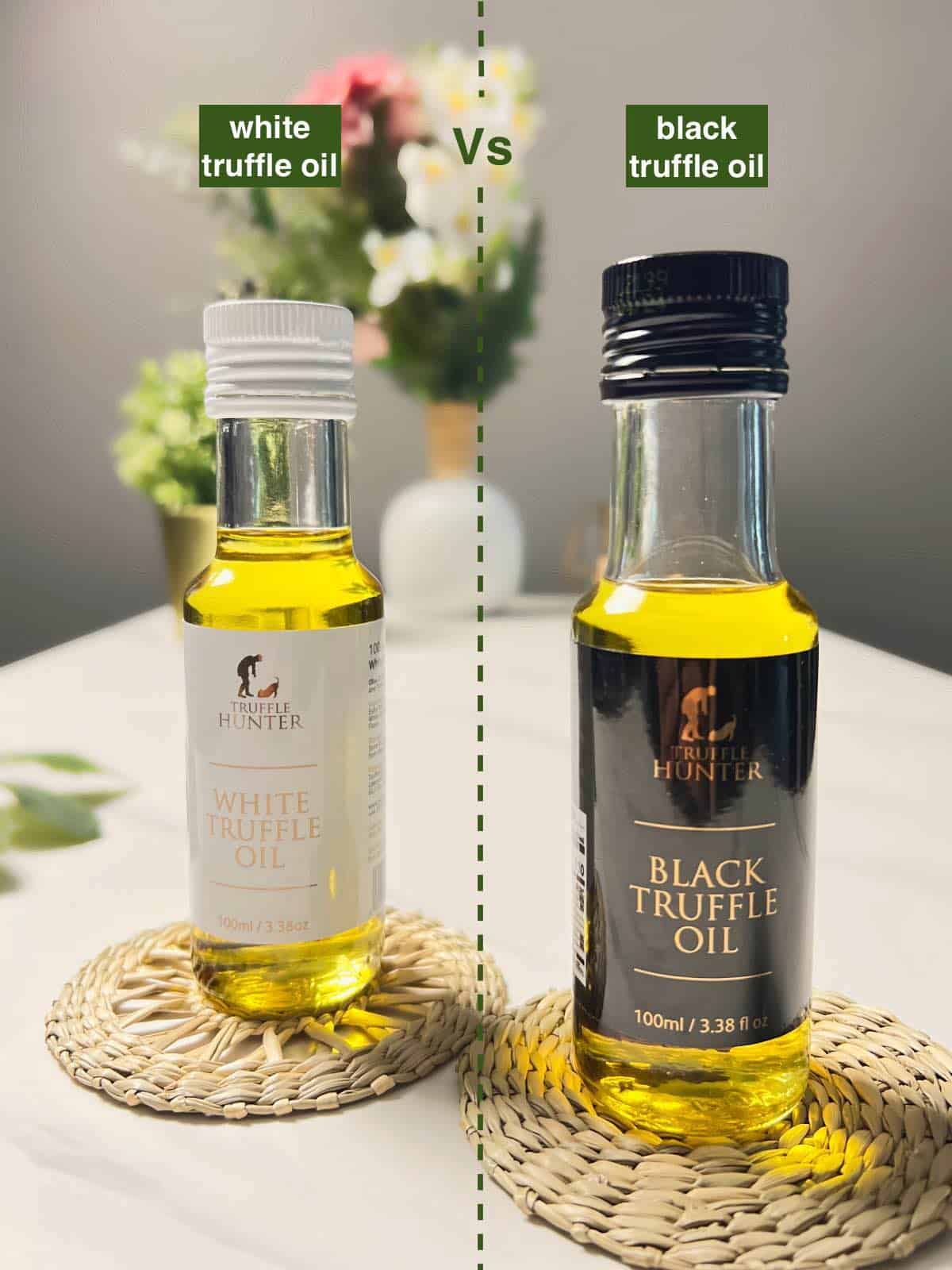
For those looking to know basic, use-related difference and / or similarity between these two, here's a quick answer:
Black truffle oil usually has a stronger and more pronounced flavor than white truffle oil. I find that they both have hints of garlic, onion and mushrooms. While the flavor intensity may vary, you can easily swap these oils in a recipe without an issue. Just use a little less black truffle oil when using it as a replacement for white truffle oil — and vice versa. And use them both sparingly as finishing oils. Remember, the flavors and potency vary with different brands.
Now if you're like me and want the whole rundown on the differences, similarities and uses then keep on reading.
But first— why use truffle oil instead of real truffles? Well, truffle is a fancy-schmancy ingredient. I mean I definitely can't afford it. And neither can most folks. Some varieties can cost more than $4000 per pound.. ahem. And these kitchen diamonds aren't exactly easy to get your hands on.
But that doesn't mean you and I can't add some truffle flair to our food using some relatively inexpensive truffle oil or truffle products. I enjoy using these in my recipes. They make the food taste indulgent and gourmet. Like something you'd eat at a nice restaurant.
Jump to:
- What are truffles
- And what is truffle oil?
- White vs. black truffle oil
- Is truffle oil the real deal?
- Why is truffle oil inexpensive compared to real truffles
- Suggested uses for white truffle oil
- Suggested uses for black truffle oil
- Where to buy
- Buying tips
- Shelf life and storage
- Truffle oil substitutes
- FAQs
- Related
- Reviews
What are truffles
Before we talk about truffle oil and compare its varieties, let's touch upon what exactly truffles are.
- What are they — highly-valued lumpy, somewhat knobby looking fungi that grow underground. They grow near the roots of certain trees. And share a mutually beneficial (aka symbiotic) relationship with these host trees. Truffles pass on the nutrients to the trees and get sugars in return.
- Types — around 200 species are known but only a handful are used. Commonly cherished varieties include Périgord Black Truffle, Burgundy Truffle, White Truffle, and Oregon Truffle.
- Taste and smell — that's hard to describe because it's so complex. And taste and smell can vary based on truffle varieties, origin and maturity (among other factors). White truffles are often described as earthy, pungent, musky, garlicky and shalloty. And are considered more delicate than black ones. Black truffles have an aroma and flavor that is oaky, earthy and musky with notes of mushrooms.
- Uses — black truffles can be used in cooking (only gentle heat) or as a topping. And play well with potatoes, rice, meat, seafood, pasta, eggs, cream and butter dishes. White truffles are super rare and super expensive. These cannot withstand cooking as the flavor diminishes and are usually shaved or grated on top of food. Like black truffles, white ones also pair well with starchy and fatty food.
And what is truffle oil?
Essentially truffle oil is a flavored oil made to mimic the smell and taste of real truffles. It is meant to be used as a finishing oil, drizzled over finished dishes. Cooking can diminish its aroma and flavor.
The base oil usually is extra virgin olive oil, grapeseed oil or some other neutral-flavored oil. And the truffle flavor comes from synthetic flavorings (most common case) or from infusing real truffles in the oil. More on the use of synthetic compounds later.
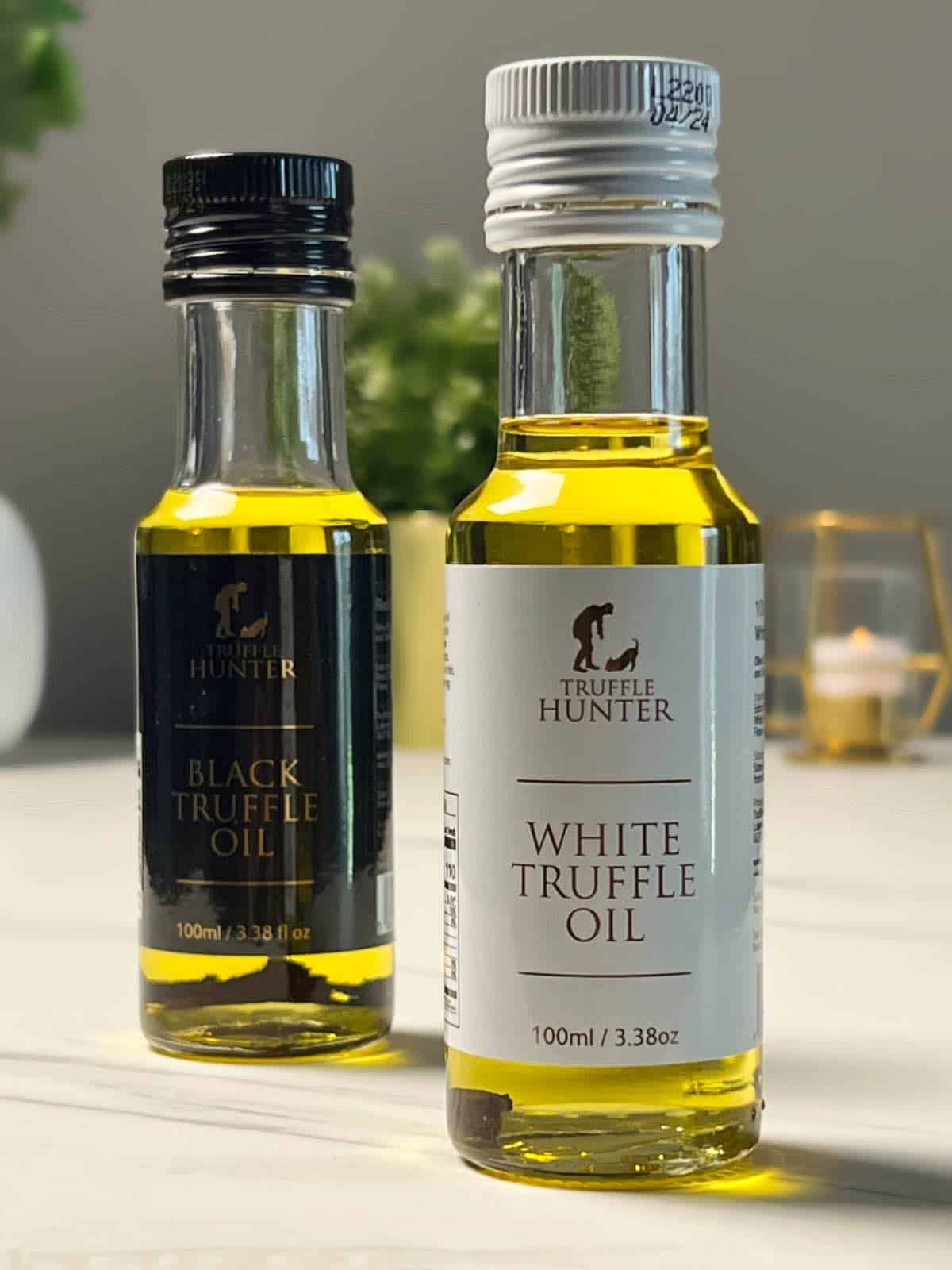
White vs. black truffle oil
Before getting into the discussion of white vs. black truffle oil I want to clarify one thing and set the stage.
Black truffle isn't just one kind of truffle. It's sort of an umbrella term that represents different black truffle varieties (also true for white truffles). So not all black truffle oils will taste same because they could be mimicking different subtypes of black truffles.
Now you'd think the truffle type would be specified on the oil bottle label, right? Nuh-uh. Most brands aren't transparent about this, likely because most of these oils aren't even made using real truffles.
Despite this ambiguity, there are still some general differences and similarities you can expect between these two broad categories of truffle oils. Here we go.
The detailed comparison
- Type of truffle flavor — the main/big difference. White truffle oil is made to taste and smell like white truffle whereas black truffle oil is all about black truffle flavor. Simple.
- Use of synthetic flavorings — both oils usually have artificial (lab-made) flavors. See truffles have volatile natural compounds that give them amazingly complex and layered flavors. But capturing that complexity in oil is not easy. Natural original flavor fades away quickly. So most truffle oil makers opt for artificial flavorings because that makes more commercial sense. Plus real truffles can cost a lot!
- Aroma — white truffle oil mimics garlicky, musky notes of white truffles with hints of shallots and some earthy undertones. Black truffle oil has more pronounced, pungent aroma — woody and earthy with hints of chocolate and mushroom. But it's very possible for both these oils to smell and taste similar (with different intensities) when made with artificial flavors. Fake flavorings can't recreate complex layers of flavors in real truffles, so end up smelling and tasting one-dimensional.
- Flavor intensity — how intense they taste can vary depending on the type, quality, and concentration of the truffle flavoring used. Oils made using real truffles will be subtle comparatively. But generally speaking black truffle oil packs a stronger, more potent flavor compared to white truffle oil.
- Appearance — both look pretty much the same in color because they're usually made with synthetic flavors. Even if the producers throw in some real truffle shavings / bits, that doesn't change the color much. Some producers might add colors to distinguish the two oils.
- Price point — if oil is made from real truffles, brace yourself for a hefty price tag. And more so for white truffle oil because white truffles are a whole lot more expensive and rare than black truffles. But, but, but — don't assume that higher price means it's all real truffle in there. Some producers might mix synthetic flavoring compounds with tiny amounts of real truffle to give a perception of authenticity and charge more. Read labels and descriptions to know what you're getting.
- Use — it's usually recommended to use white truffle oil for a milder truffle taste in delicate dishes, and black truffle oil when you want stronger truffle flavor. While that is true, you can totally switch 'em up. Just use less black truffle oil instead of white truffle oil, and vice versa. And don't forget that both oils are meant to be used as finishing oils, not for cooking at high heat. I've shared suggested specific uses for both oils later.
- Availability — you might not find these on the shelves of a local grocery store but these both types are usually available online. Oil made with real truffles can be lot harder to find, especially white truffle oil. And it might not even be available all year round (seasonality aspect), depending on the type of truffle used and their limited shelf life.
- Shelf life — both types of truffle oils have similar shelf life. Oils made using real truffles have a much shorter shelf life compared to synthetic ones. Check the best-before date on the label. Use them within a few months, even if they have artificial flavorings. Store in a cool, dark spot, away from heat and sunlight.
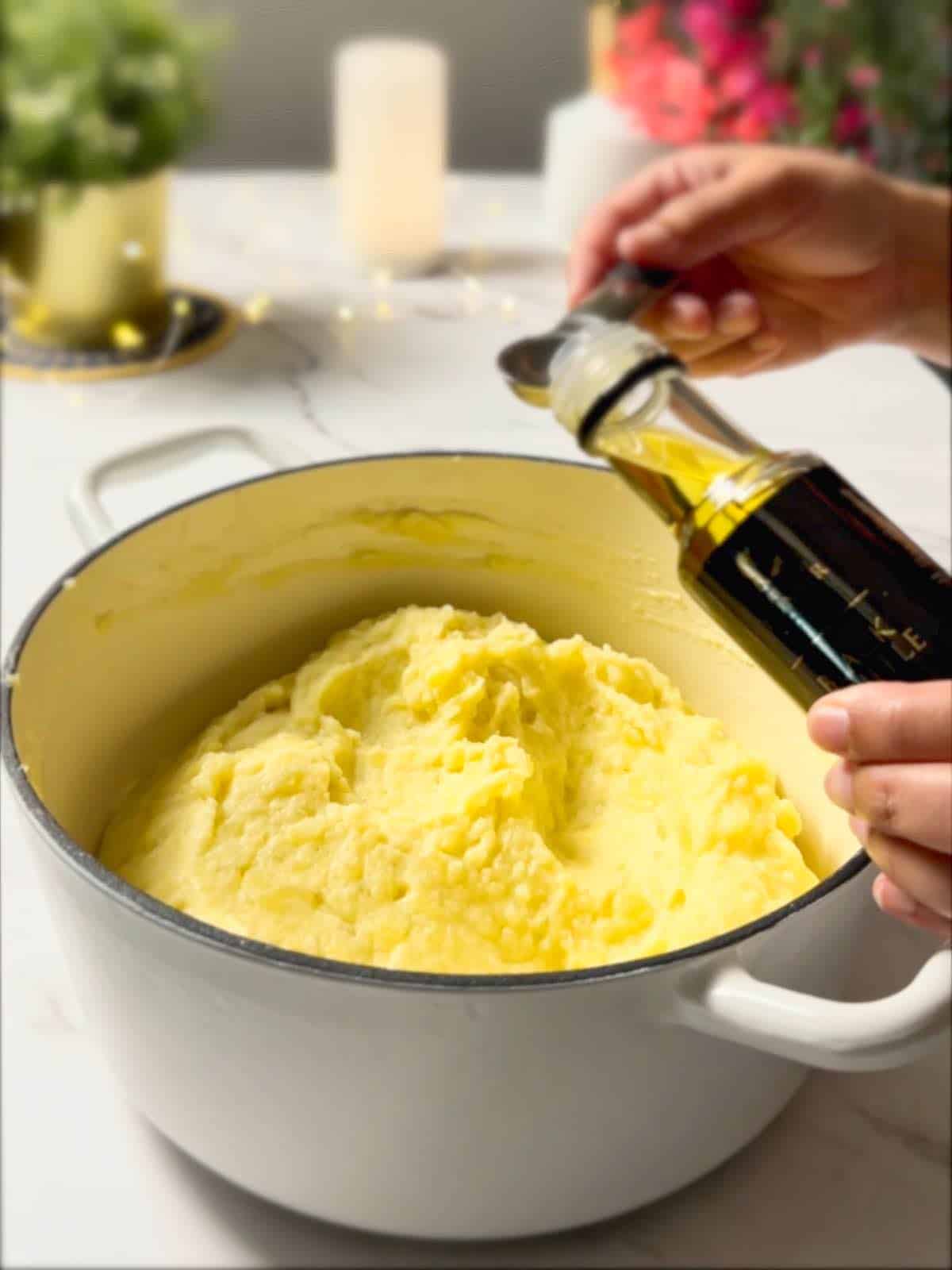
Is truffle oil the real deal?
Answer to that question depends on what's in your truffle oil. Authentic truffle oil made with real truffles and no artificial flavoring does exist but it's rare and pricey. Most truffle oil you find is made using synthetic flavorings (like 2,4-dithiapentane and dimethyl sulfide).
As I mentioned earlier, some truffle oils might have actual truffle bits / shavings mixed in, but chances are they still contain synthetic flavorings. The natural flavors found in real truffles are quite volatile, hard to extract and lose their punch very quickly. So to create commercially-viable shelf-stable products, those fake flavorings are usually added.
Truffle oil can have a truffle-like flavor, but it's not nearly like the real thing. Synthetic compounds give it one dimensional taste, lacking complexity and depth of genuine truffles. Real truffles have many nuances in both aroma and flavor.
Oh and you know what else? Opinions on truffle oil can be very differing (and sometimes polarizing) among food critics and/or enthusiasts. Some argue that truffle oils, especially those made with synthetic compounds have very fake taste that's not even close to the real thing. Others enjoy the convenience and affordability of truffle oil and appreciate the delight it brings to their dishes.
Ultimately the answer to whether truffle oil is the real deal depends on your perspective. If you're seeking very true taste of truffles, it's best to go for real truffles (if you have the budget and access) rather than using truffle oil/products.
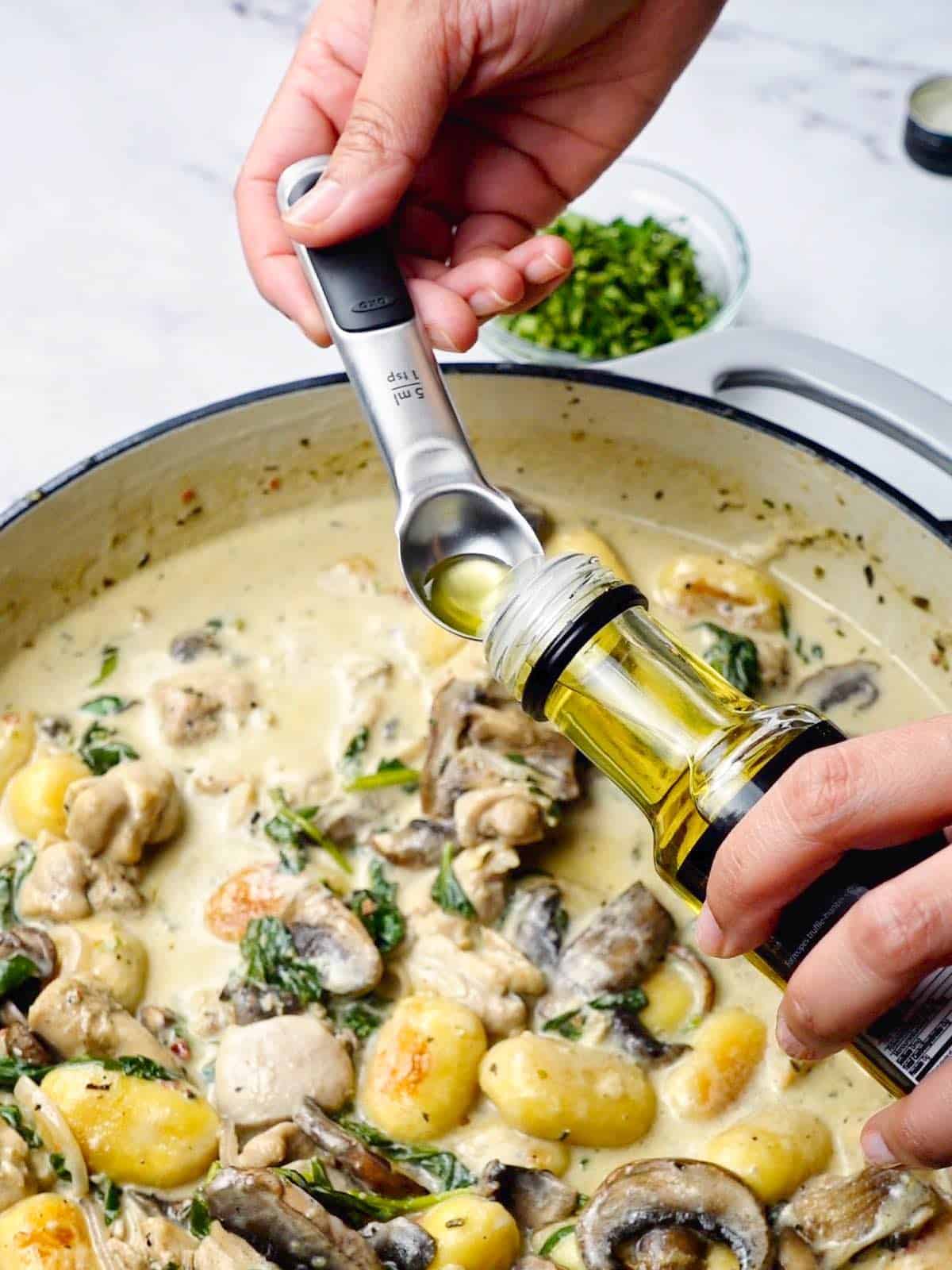
My take on this
Well I am all for getting a sneak peek of the truffle-taste experience using the truffle oil or other truffle products. I use these things sparingly and like how they transform my dishes. Fully aware though that using these may mean that my perception of the real truffle flavor may be flawed forever and I may not be able to appreciate the real thing (when I have opportunity to try).
But for now I am ok with the use of artificial flavoring. Truffle oil is used in very small quantities (a dash here, a teaspoon there) so I won't lose any sleep over it. I also indulge in carbonated drinks, chocolates, pre-packaged snacks, condiments, sauces and frozen desserts occasionally. And all of these usually contain artificial flavorings. So why give truffle oil so much hate, if you catch my drift.
Why is truffle oil inexpensive compared to real truffles
- Synthetic flavor — common truffle oil is often made using artificial flavoring which is much cheaper to produce than real truffles. Truffles are hard to cultivate and for some varieties commercial cultivation is nearly impossible.
- Truffle availability — truffles are relatively scarce, only found in specific regions around the world and are typically harvested during specific seasons. Limited supply drives up their prices.
- Harvesting challenges — truffles grow underground, require special techniques and trained dogs/ pigs to locate and harvest them. This process is skill and labor-intensive, plus time-consuming and results in high pricing.
Note: Not all truffle oils are created equal and some higher-quality truffle oils may be more expensive due to infusion of real truffle extract instead of artificial flavorings.
Suggested uses for white truffle oil
- Fries — toss cooked fries with a touch of truffle oil and some grated parmesan
- Popcorn — drizzle the oil over freshly popped popcorn and mix to coat evenly
- Scrambled eggs — gently fold in a small amount of truffle oil just before plating
- Pasta — elevate your creamy or red pasta dish by adding a hint of truffle oil as a finishing touch
- Fish — very lightly brush a thin layer of truffle oil onto grilled or baked fish
- Mashed potatoes — add a little oil to mashed potatoes and mix well
- Aioli dip — elevate your fav aioli / mayo dip by incorporating a few drops of the oil
- Risotto — mix in a small amount of truffle oil after turning the heat off
- Gnocchi — add the oil after turning off the heat and before adding garnish
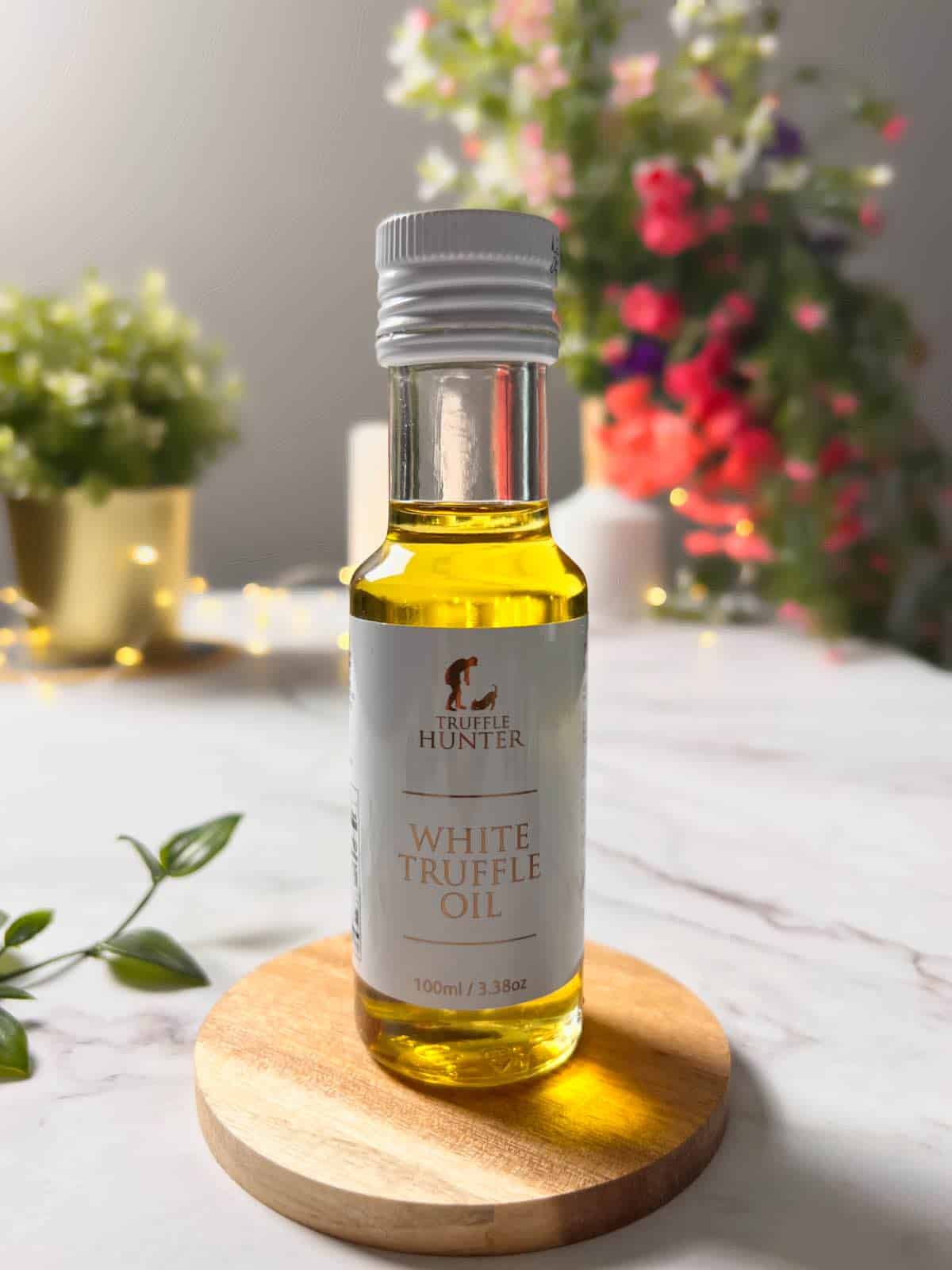
Suggested uses for black truffle oil
- Pizza — evenly drizzle a little amount of oil over freshly baked pizza
- Crostini topping — add the oil along with other toppings like mushrooms and cheese
- Salad dressing — whisk a little oil into your go-to dressing or vinaigrette
- Vegetable sauté — finish your sautéed veggies with a dollop of butter and a little oil
- Steak — drizzle a small amount of oil over a juicy steak before serving
- Mac and cheese — mix a little oil into the finished mac and cheese before serving
- Creamy soups — swirl some truffle oil into creamy soups like mushroom or potato soup
- Truffle butter — mix the oil into softened butter and refrigerate it to create your homemade truffle butter
- Truffle salt — mix truffle oil with coarse sea salt to make your own truffle salt
- Bread dipping oil — add a little truffle oil to some bread dipping oil and enjoy with freshly warmed-up baguette
While I've provided suggested uses for both white and black truffle oil above, you can easily sub one for the other. Just remember that black truffle oil is generally more potent. So when using black truffle oil as a sub for white truffle oil you may need to use a little less. Best to begin with a small quantity and gradually increase it to your preferred level of intensity. And when I say gradual I mean a few drops at a time.

Where to buy
- Online retailers — Amazon, Costco online, specialty or gourmet food websites may have it available. Also google and explore any dedicated websites that focus solely on truffle products in your region.
- Specialty food stores — physical stores that carry gourmet or international foods may also carry them.
- Farmers or artisanal food markets — your local farmers or artisanal food markets may have vendors who sell truffle oil. Especially if you live in parts of world where truffles are cultivated. Be sure though that you feel confident about the source of the truffles and the authenticity of the oil production process. Don't pay a high price just because something looks small-scale / artisanal but has vague information.
Buying tips
These tips are going to be useful when you are on a hunt to get authentic truffle oils — those that don't use synthetic flavors. There's not much to look out for when you are getting commonly-sold artificially flavored ones because there's no fear of getting duped as such.
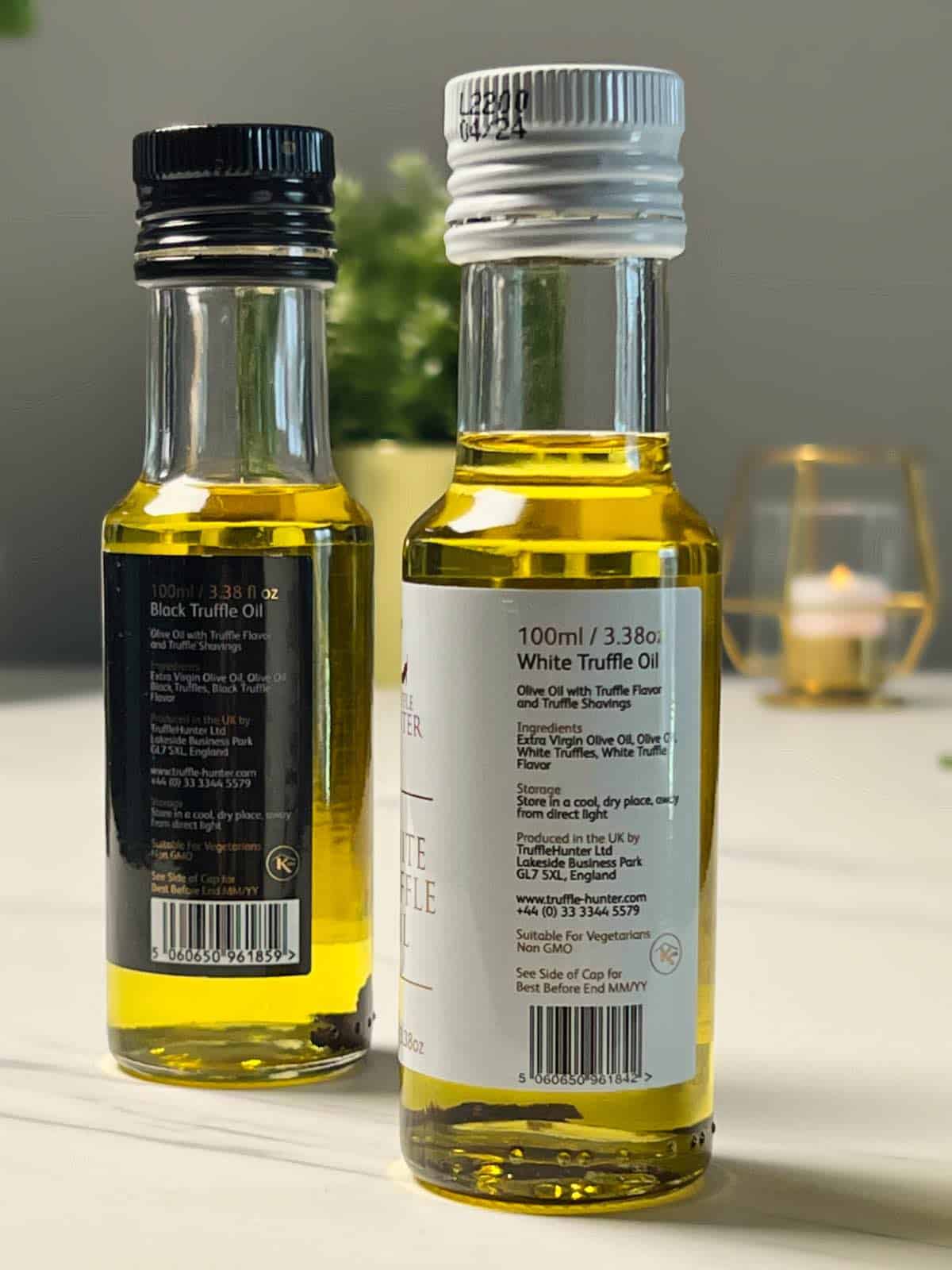
- Read labels carefully — read ingredient list on the bottle. Avoid products that list generic terms like truffle flavor or truffle essence as that may indicate use of synthetic flavors.
- Price point — real truffle oil is generally much more expensive than fake one. But expensive doesn't always mean quality. Some products claim to contain real truffles but actually have artificial flavors with only tiny amounts of real truffle, yet cost more. So these aren't the real deal either. Always read labels.
- Transparency: Look for brands / producers that prioritize transparency and provide detailed information about sourcing and production processes.
- Production date — different truffles have different harvest seasons. Google the harvest seasons for the type of truffle used in the oil you're getting (if the truffle type is mentioned on label). The harvest season should align with the oil's production date. Choose truffle oil that has been produced no more than six to eight months before your purchase. Two-year-old truffle oil isn't worth your money.
- Authenticity seals or certifications — some products may have these seals / labels from recognized truffle associations or organizations. Look for those too.
- Reviews — online reviews might also give you a good idea of the quality and authenticity of the oil.
Shelf life and storage
- Shelf life — oil made using real truffles lasts for 6 months to 1 year from production date. Oils with synthetic flavors tend to have longer shelf life and can last between 1 and 2 years or even longer. Check the best before dates.
- Storage — store these oils in a cool, dark place away from direct light, heat and humidity. Keep them tightly sealed and avoid storing in places prone to temperature variations.
Truffle oil substitutes
- Fresh truffles — if you can access and afford them. Shave or grate directly onto your dishes for the most authentic truffle aroma and taste.
- Other truffle products — these are your next best bet and include truffle salt, truffle butter, truffle pasta, truffle carpaccio, truffle cheese, truffle honey, truffle mustard, truffle mayo/aioli, truffle hot sauce, truffle seasoning etc. They have different uses, so do a little research to see which one will suit your need best. Use truffle products sparingly as truffle flavor can easily overpower other flavors.
- Mushroom powder — can provide somewhat similar umami touch to your dishes. You can make this at home by grinding dried mushrooms into a fine powder.
- Porcini oil — porcini mushroom oil also has an earthy undertone like truffle oil. Don't expect the same flavor and intensity though.

FAQs
Nope, not meant for cooking at high temperatures. The flavors and aromas can be very sensitive to heat and can diminish quickly. In fact you may end up getting undesirable flavors. It's best to use these as finishing oils only or as an ingredient in cold dishes.
In most cases, yes. Truffle oil is typically made by infusing real truffles into a base oil or by adding synthetic flavors. This typically does not involve use of animal products but always read label to be sure that no animal-derived ingredients or additives are in there.
Yes. It's sometimes used in the training of truffle hunting dogs to familiarize them with smell of truffles.
Related
Check out these posts — they might be of interest to you!




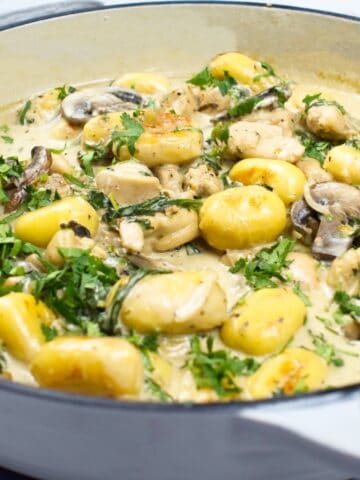
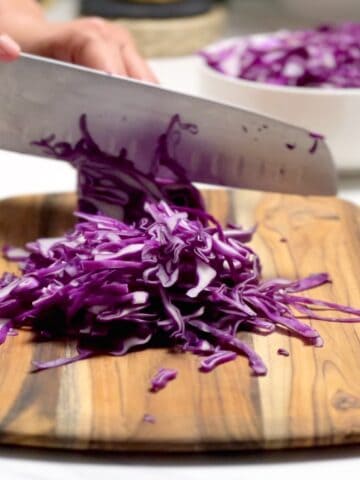

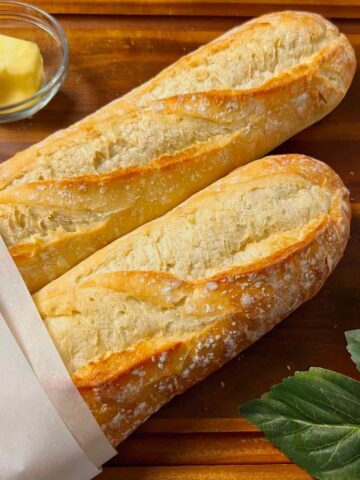

June Tagg
Thank you for this information. It was very helpful in helping me choose whether to use white or black.
Nelo
Thanks June, glad you found the information useful 🙂
Jess
I like how well you've explained the differences! btw I too am team truffle oil, real or not. Don't mind a little flavor experience without burning a hole in my wallet for the real truffles.
Nelo
Thanks for the appreciation, Jess!
Honey
Thank you for sharing.
Never knew this before.